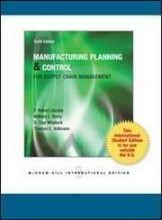Green product & service design + Life Cycle Assessment
5 important questions on Green product & service design + Life Cycle Assessment
There are three levels (modes) of supplier integration governance. Give the description of these three governance modes.
2.Grey box integration: the buyer and supplier enter into an informal, or sometimes a formal joint development effort, which may include information and technology sharing and joint decision making regarding design specifications. --> copying of intellectual property is risk
3.Black box integration: The supplier is informed of customer requirements and then is given almost complete responsibility for the purchased item, with only review and concurrence on the purchased item’s specifications by the buying company.
There are 4 different types of innovation, which are related to the core design concept (basic knowledge underlying components) and interfaces (linkages between core design concepts & components). Explain the 4 different types of innovation according these two characteristics.
4 types of innovation:
- Changed VS unchanged interfaces and,
- changed VS unchanged core concepts.
Example:
Interfaces in practice: Apple – Iphone 4: noise reduction circuitry --> example of modular product architecture
Later on in Iphone 4S: Chip + noise reduction circuitry --> example of integral product architecture.
Genesis: modular --> evolution: towards integral
Case study 1: Zero- Waste Supermarkets
1. Identify sustainable activities present in this example. Distinguish between demand and supply side approaches.
2. Who are the relevant stakeholders in this supply chain? How does the focal firm influence them to adopt sustainable practices?
3. Evaluate and discuss the effects of these practices upon the entire industry/supply chain in the long-run.
4. Does this type of grocery shopping align with the principles of the ecologically dominant logic? Why?
5. What do you envision are the most important challenges / barriers for a wider diffusion of this concept?
- Less waste of products because customer takes as much as he needs
- Delivery from suppliers can slo be less wasteful
- The suppliers are also "promoted" to change standards
- The stakeholders are the customers and suppliers
- The customers are influenced because they are forced to bring their own bags etc.
- The suppliers need to deliver in other shipment units
- It is difficult to change the shopping habits of customers
- Customers tend to be more adaptive to convenience instead of environmental friendliness
- A challenge is to quantify/ clarify the benefits.
- Higher grades + faster learning
- Never study anything twice
- 100% sure, 100% understanding
Managing risk is recognised as a business function. There are three types...
- True risk: parameters and probabilities are known (rare);
- Uncertainty: parameters may be known, but probabilities not! (very common)
- Ambiguity: neither the parameter nor probability is known.
For sustainable development there is often ambiguity, since it is hard to identify the interdependencies between parameters, but also to identify the parameters self. An example are social issues which are often conflicting. And sustainable development involves more stakeholders (compared to environmental development solely).
What is needed for a more overall sustainability approach? (conclusion article)
--> Therefore, understanding the overall picture and connections between different parameters (environmental, social and economic) is more important than having deep but disconnected expertise in one area.
Due to the complexity and ambiguity of sustainable development deductive approaches are less adequate.
--> It is suggested to use analogical reasoning (comparing multiple approaches)
--> Environmental management is becoming a task for middle managers and technicians. While the complexities and ambiguities are a task for senior management and researchers.
The question on the page originate from the summary of the following study material:
- A unique study and practice tool
- Never study anything twice again
- Get the grades you hope for
- 100% sure, 100% understanding

Topics that are related to Green product & service design + Life Cycle Assessment
-
Green product & service design + Life Cycle Assessment - Green Product & Service Design
-
Green product & service design + Life Cycle Assessment - Product Life Cycle Assessment (PLCA)
-
Green product & service design + Life Cycle Assessment - Tutorial 1: Sample exam questions & discussion questions - Sample exam questions
-
Green product & service design + Life Cycle Assessment - Article: Arnette et al. (2014): Design for sustainability (DFS): The integration of Supply Chain and sustainability





























